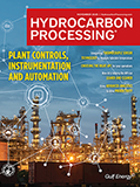Boosting butylenes production from an FCCU through an HBC catalyst technology
Based on the generation and conversion mechanism of butylenes during the FCC process, this article details the design, development and commercial trials of the latest high-butylenes selectivity catalysts (HBC) series catalysts boosting butylenes without compromising gasoline yield. Its potential to increase butylenes has been confirmed through laboratory evaluation and commercial trial results.
IP: 10.3.3.253
This is a preview of our premium content. Thank you for your interest—please
log in or
subscribe to read the full article.
The Authors
Y. Liu - Sinopec Research Institute of Petroleum Processing Co., Ltd., Beijing, China
YUQING LIU is an Assistant Professor at SINOPEC Research Institute of Petroleum Processing Co. Ltd. Her research focuses on the development of FCC catalysts and additives, primarily dedicated to the modification of zeolites and meso-macroporous matrix materials. She participated in the development and application of the additive throughout the process.
S. Yu - Sinopec Research Institute of Petroleum Processing Co., Ltd., Beijing, China
SHANQING YU is a Professor at SINOPEC Research Institute of Petroleum Processing Co. Ltd. She is the senior expert on R&D of FCC catalysts and additives. Dr. Yu has developed and commercialized catalysts for boosting high-octane gasoline, interconnected meso-macroporous catalysts for heavy feed conversion, and catalysts for increasing butylenes yield. She has publish > 20 papers in reputable journals and authored > 60 patents.
J. Yan - Sinopec Research Institute of Petroleum Processing Co., Ltd., Beijing, China
JIASONG YAN is a Professor at SINOPEC Research Institute of Petroleum Processing Co. Ltd. His areas of management include catalyst development and application, technical services for FCCUs, and the scale-up of catalysts and additives. He has 30 yr of research experience in catalytic cracking mechanism and synthesis of catalytic materials.
S. Guo - Sinopec Research Institute of Petroleum Processing Co., Ltd., Beijing, China
SHUO GUO is an Assistant Professor at SINOPEC Research Institute of Petroleum Processing Co. Ltd., where she is engaged in the research of FCC catalysts. Dr. Guo has conducted in-depth research on the peptization mechanism and stability of metal sol, and has made significant contributions to the development of novel metal sol.
Related Articles
From the Archive










Comments